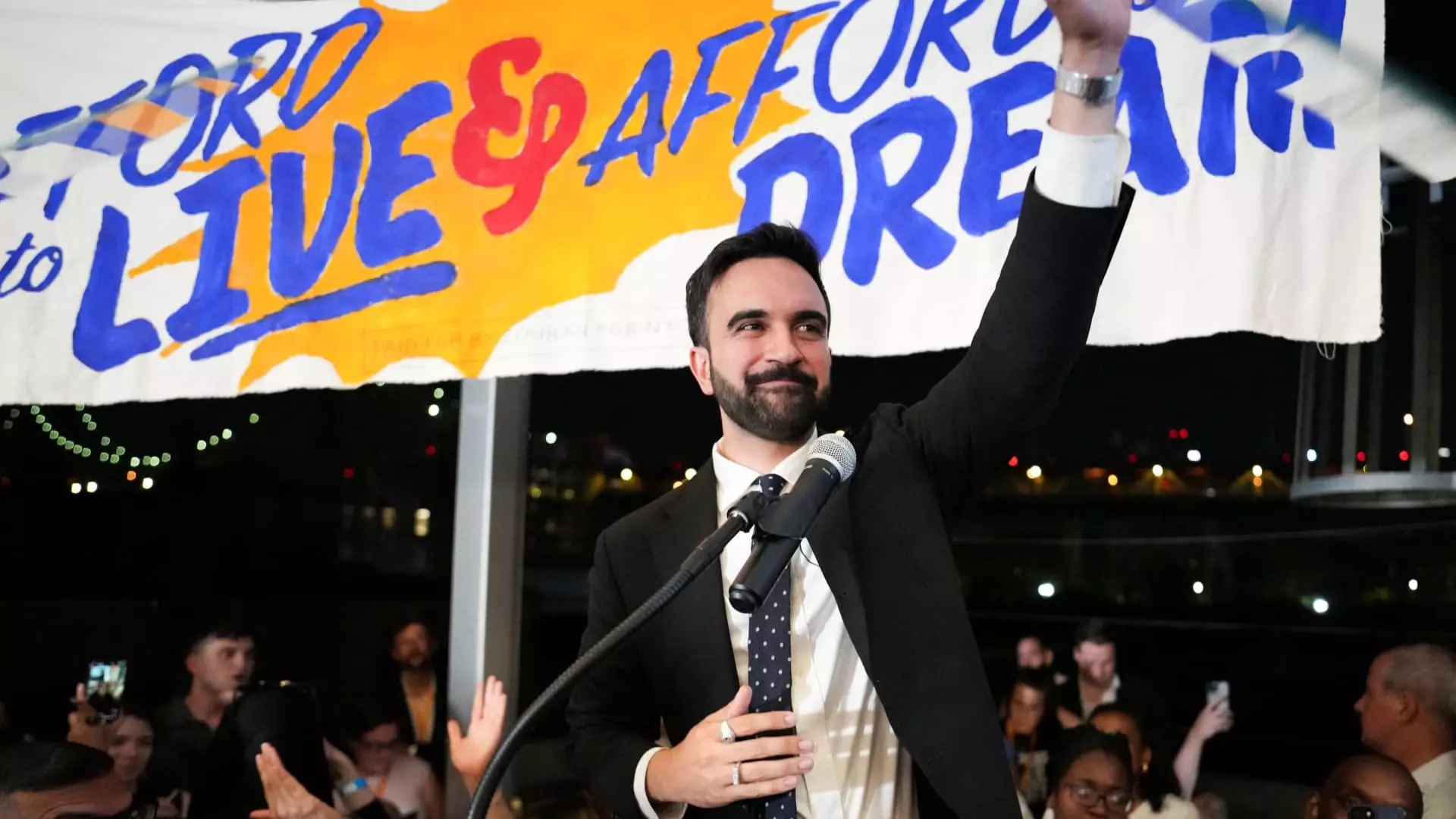In recent years, New York City has been caught in a tumultuous debate about its identity as a global financial hub and cultural capital. The rise of new leadership figures like Zohran Mamdani, and their ambitious policies such as proposing a hefty “millionaire tax,” have reignited fears of a mass exodus of the city’s wealthiest residents. While such fears might seem rooted in common sense—after all, who wants to face the highest tax burdens in the country?—a closer inspection of the data reveals a more complex picture. The city’s resilience and capacity to draw and retain elite wealth appear to defy these alarmist narratives, signaling a possible miscalculation of the true drivers of high-net-worth migration.
The core issue revolves around the so-called “millionaire tax,” an extra 2% on annual earnings exceeding one million dollars. When combined with federal and state rates, this pushes the top marginal rate into the stratosphere, threatening New York’s competitive edge. Critics argue this would catalyze a mass departure, especially considering the ease with which high earners can relocate just outside the city boundaries to neighboring counties or states with significantly lower taxes. However, evidence of a tangible exodus remains elusive, as the city’s deep-rooted economic vitality seems to sustain its allure despite these proposals.
It’s important to acknowledge that the wealthy are not monolithic in their decisions. While some may consider relocating to lower-tax jurisdictions like Florida or New Jersey, many are driven more by lifestyle factors—property rights, cultural amenities, social networks—than by fiscal considerations alone. The narrative that crushing high taxes spurs a wholesale departure oversimplifies the motivations at play. The city remains a magnet for wealthy individuals, primarily because it offers a unique mix of culture, business opportunities, and prestige that no tax policy change can easily diminish.
Resilience in the Face of Policy Threats: The Myth of Wealth Drain
Contrary to prevalent fears, the data suggests that New York’s elite wealth continues to grow, even amidst debates over taxation. Over the last decade, the number of millionaires in the city has more than doubled, reaching over 2.4 million—despite the economic shocks of the COVID-19 pandemic. The presence of over 33,000 individuals worth at least $30 million highlights a persistent, powerful magnetism for ultra-wealthy individuals. This indicates that affluent populations are not static; they ebb and flow, but the city’s overall attractiveness sustains its high-end market.
Luxury real estate transactions tell a similar story. Contracts for mansions and high-end apartments remain robust, with values rising and new ultra-prime estates changing hands regularly. The recent signed deals, including penthouses valued at tens of millions, demonstrate continued confidence in New York’s luxury market. Such resilience suggests that the city’s reputation, cultural cachet, and quality of life are formidable enough to withstand some of the economic discomfort caused by potential tax increases.
Furthermore, demographic and economic studies highlight that while some top-tier earners may temporarily leave or hold assets outside the city, the overall impact on revenue streams and economic dynamism is not as dire as kamikaze narratives suggest. The so-called “tax migration” appears more nuanced: many wealthy New Yorkers choose to keep their ties to the city intact, while their personal and professional networks stay rooted in the city’s vibrant ecosystem.
Economic Growth and the Myth of Outmigration
The argument that higher taxes drive wealth away is supported by some historical examples, such as California’s “taxodus.” But applying this logic simply to New York ignores its unique competitive advantages. The city’s financial Industry, cultural institutions, elite education centers, and global reputation continue to attract talent and capital. Even with higher taxes, the city remains a hub where wealth tends to circulate rather than completely depart.
Interestingly, some data indicates that the most productive and high-earning residents are less likely to leave than middle-income groups. The top 1% tends to stay more committed to local investments and social capital than they are deterred by tax policies. When they leave, they often relocate within high-tax states or neighboring regions with similar amenities, influenced by lifestyle and personal considerations rather than tax rates alone.
This insight underscores a broader truth: New York’s economic engine is multifaceted. Its ability to regenerate wealth, maintain a robust luxury market, and attract new high-net-worth individuals suggests that the city’s allure is deeply rooted in its cultural, infrastructural, and social capital. Tax policies, while influential, are not the only—or even primary—determinant of the city’s long-term appeal.
Balancing Prosperity and Policy: A Center-Left Perspective
From a centrist liberal standpoint, the challenge is not solely about favoring the wealthy or fearing their departure, but about creating a balanced approach that sustains economic vitality while addressing inequality. High taxes on the super-rich can generate necessary revenue to fund vital services, infrastructure, and housing initiatives that benefit the broader population. But excessively punitive policies risk undermining the city’s economic backbone.
Rather than viewing the wealthy as the enemy, the focus should be on creating a collaborative environment—where policies incentivize growth, innovation, and social cohesion. Measures that enhance the livability of the city, maintain its identity as a cultural and financial capital, and ensure fair taxation without driving out talent and investment are essential.
The narrative that New York is on the brink of a wealth flight disaster is alarmist and underestimates the city’s resilience. While aggressive tax proposals and public safety concerns merit careful consideration, they are unlikely to fragment the complex fabric that makes New York a globally dominant economic and cultural hub. The city’s ability to adapt, attract, and retain wealth will depend on nuanced, balanced policies that recognize the multifaceted needs of its diverse population.

